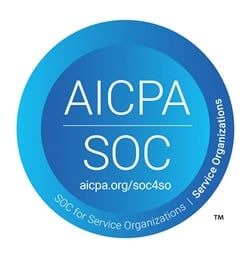Automating the assessment and compliance of data conformity with standards, thanks to AI-Powered semantic hubs
On April 10, 2025, Dawex VP of Technology & Research, Frederic Bellaiche, presented at the workshop entitled “LLMs to support Semantic Interoperability”, co-organized by the BDVA Association and SEMIC. The aim of the session was to explore the latest advancements in techniques, tools, and applications leveraging Large Language Models (LLMs) to enhance semantic interoperability. The workshop also featured real-world use cases where LLMs were used to align data models, enrich semantics, and facilitate cross-domain interoperability..
Semantic interoperability is crucial for enabling different systems, organizations, and domains to exchange and understand data in a meaningful way. While technical interoperability ensures data can be transmitted between systems, semantic interoperability ensures that the meaning of the data is preserved and consistently interpreted. This is especially important when integrating data from heterogeneous sources, such as in healthcare, energy, transportation, construction and industry sectors, where the same term might carry different meanings in different contexts. Without semantic interoperability, data integration efforts can lead to misunderstandings, inaccurate insights, or even operational errors.
In an increasingly data-driven world, semantic interoperability is foundational for effective collaboration, innovation, and automation. By ensuring shared understanding of concepts, relationships, and data structures, semantic interoperability paves the way for scalable AI applications, cross-domain analytics, and smarter digital services.
AI —A powerful path to semantic interoperability enabling the re-use of data in European Data Spaces
Artificial Intelligence is emerging as a powerful enabler of semantic interoperability, playing a key role in unlocking the full potential of data reuse across European Data Spaces. While much progress has been made in areas like legal, organizational, and technical interoperability, semantic interoperability remains the critical layer that ensures the meaning of data is preserved when exchanged across different systems and organizations.
In the European Union, legal interoperability has already been established through frameworks like the Data Governance Act (DGA, 2023) and the Data Act (DA, 2025). These regulations ensure that organizations operating under different legal systems can collaborate, thanks to aligned policies and legislation that facilitate cross-border and cross-sector data sharing.
Organizational interoperability has also been achieved, driven by efforts of the Data Space Governance Authority (DSGA) who introduced the role of Data Space Governance Authority (DSGA) to orchestrate Data Space in this perspective. This dimension ensures that identities and claims are properly verified between entities, and that there are clearly defined agreements, responsibilities, and coordination mechanisms in place.
On the technical interoperability front, initiatives like Gaia-X, Trusted Data Transaction, and Dataspace Protocol, have established robust standards for communication between IT systems. These include protocols, APIs, data formats, and security measures, ensuring that systems can reliably exchange data through agreed-upon standards.
However, the final and perhaps most complex layer—semantic interoperability—is key to truly unlocking interoperable data spaces. This involves ensuring that data exchanged between systems and organizations retains its original meaning. Achieving this requires the use of standardized vocabularies, metadata, and ontologies, enabling all parties to share a common understanding. By solving semantic mismatches, AI technologies can help bridge gaps between data models, support semantic enrichment, and facilitate cross-domain collaboration in a meaningful, machine-readable way.
Towards AI-Powered Semantic Hub for Data Spaces
To ensure data within European Data Spaces is not only exchanged but also meaningfully interpreted and compliant with relevant standards, automation powered by AI has become essential. Dawex proposal introduces an AI-Powered Semantic Hub for Data Spaces, designed to automate the assessment and compliance of data conformity using AI models and intelligent control mechanisms.
At the heart of this system is a Semantic hub that aligns data from various interconnected data spaces with established standards across sectors and applications. By leveraging advanced technologies such as Generative AI, LLMs, and semantic tools like OWL, RDF and SPARQL, the hub can understand, interpret, and transform data in line with standardized semantic expectations.
From training models to live deployment, the AI-Powered Semantic Hub acts as a bridge between raw, often heterogeneous data and structured, interoperable information. It delivers a range of automated compliance capabilities, including:
- Conformity checks to ensure data adheres to predefined semantic rules,
- Structural adjustments to align data formats and relationships,
- Data transformation to convert disparate datasets into harmonized structures,
- And verification and gap analysis to identify inconsistencies or areas needing enrichment.
The AI-Powered Semantic Hub is aligned with European Commission’s high level goals while providing many concrete benefits to Data Spaces orchestrators such as:
- Creating a common language within your data space
- Removing frictions for seamless data exchange
- Facilitating interoperability with other data ecosystems
This AI-Powered Semantic Hub for Data Spaces approach not only streamlines data integration across domains but also ensures reliability, scalability, and semantic integrity in dynamic, cross-sectoral environments.
Want to learn more about the benefits of Data Exchange? Subscribe to Dawex newsletter here.


